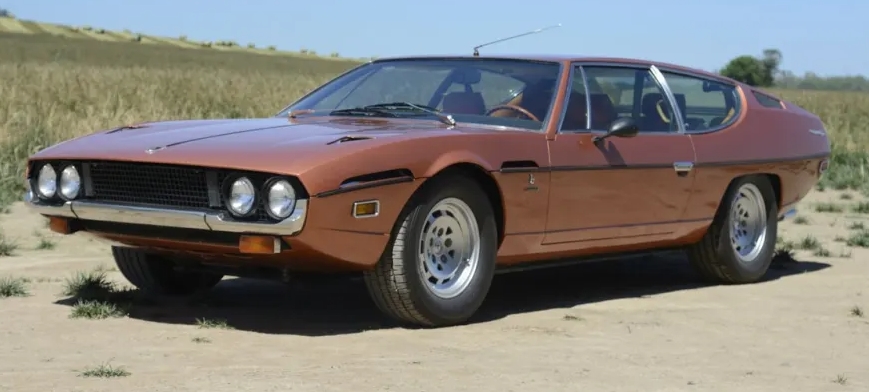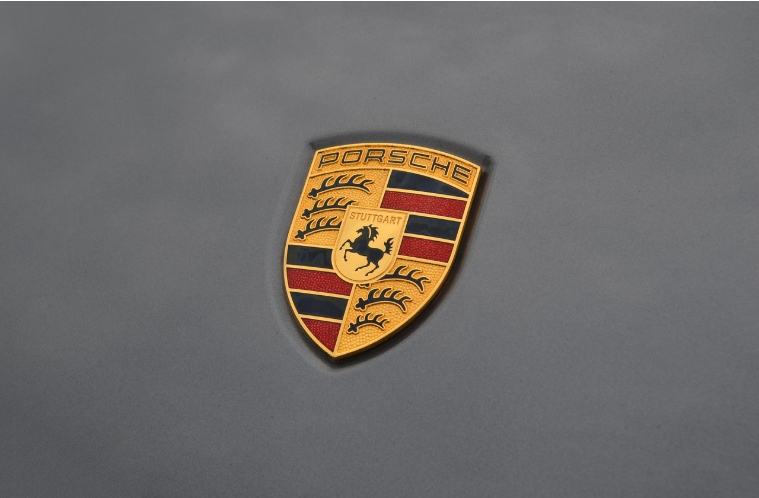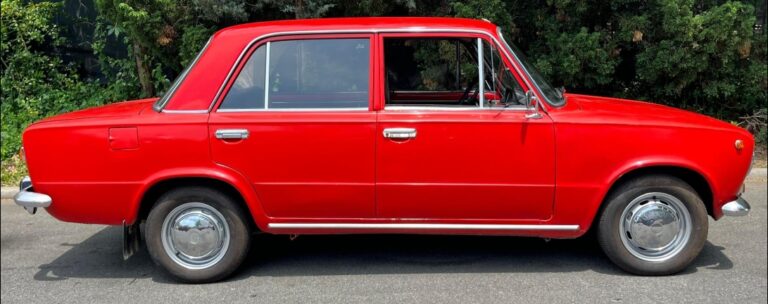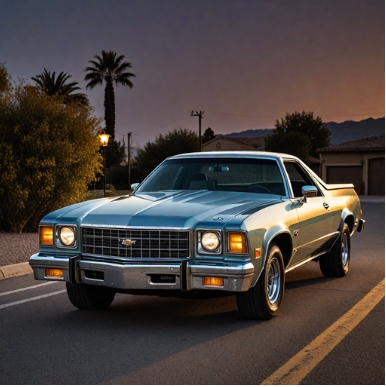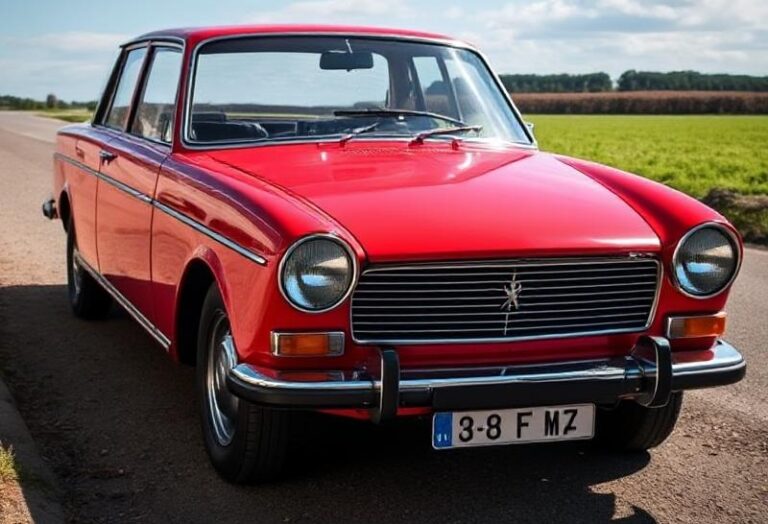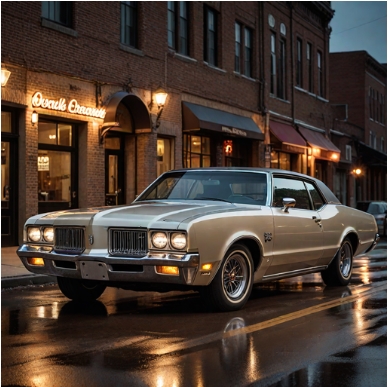The Sword of Sant’Agata: The Ten-Year Evolution of the Lamborghini Espada
In the pantheon of automotive design, some cars are beautiful, some are fast, and a select few are truly audacious. The Lamborghini Espada belongs firmly in the latter category. It was a machine born from a singular, almost paradoxical vision: a practical, four-seat family car powered by a thoroughbred racing V12, wrapped in a body that looked like it had landed from another planet. Produced for a full decade from 1968 to 1978, the Espada not only became Lamborghini’s most commercially successful model of its era but also underwent a fascinating evolution, maturing from a radical concept into a refined, world-class grand tourer. This is the story of its three distinct series.
The Genesis: A Concept for the Jet Set
To understand the Espada, one must first look to the avant-garde world of late 1960s concept cars. Ferruccio Lamborghini, having already stunned the world with the sensual Miura supercar and the elegant 400GT 2+2, desired something more. He envisioned a true quattro posti (four-seater) that offered genuine comfort for four adults without compromising on Lamborghini’s high-performance ethos.
The task fell to Marcello Gandini at Bertone, the same young genius who had penned the Miura. His first attempt was the 1967 Lamborghini Marzal, a show-stopping concept built on a stretched Miura chassis with a rear-mounted inline-six engine. Its most dramatic feature was a pair of enormous glass gullwing doors that encompassed almost the entire side of the car. While spectacular, the Marzal was deemed too extreme—and its glass doors too revealing—for production.
That same year, Gandini created the Bertone Pirana, a concept built on a Jaguar E-Type chassis. This car established the front-engine, long-hood, fastback GT silhouette that would define the production model. The Espada, therefore, became a brilliant synthesis of these two ideas: the four-seat packaging and futuristic drama of the Marzal combined with the more conventional and powerful front-engine layout of the Pirana. Named “Espada,” the Spanish word for a matador’s sword, the car was ready to strike.
Series I (1968–1970): The Original Vision
Unveiled at the 1968 Geneva Motor Show, the first-generation Espada, retrospectively known as the Series I (or S1), was a revelation. Its design was unlike anything on the road. At nearly 4.8 meters long but only 1.19 meters high, its proportions were breathtakingly dramatic. A long, low bonnet housed the glorious 3.9-litre, 60-degree V12, inherited from the 400GT but tuned to produce a formidable 325 bhp. This engine, featuring six Weber twin-choke carburetors, propelled the grand tourer to speeds approaching 155 mph (250 km/h).
The exterior was pure Gandini science fiction. The sharp, wedge-like profile, enormous glasshouse, and distinctive Kamm tail created an unforgettable shape. Unique details abounded: twin NACA ducts on the bonnet fed air to the cabin, and a slim, fixed vertical glass panel sat beneath the rear windscreen to aid reversing visibility—a clever solution to a problem created by the car’s radical design. The wheels were elegant knock-off magnesium units by Campagnolo, identical to those used on the Miura, reinforcing its supercar DNA.
Inside, the Series I was just as futuristic and arguably more controversial. The dashboard was a direct descendant of the Marzal concept, featuring a collection of octagonal binnacles for the Jaeger instruments, set within a stark, minimalist panel. The switchgear was scattered in a way that prioritized aesthetics over ergonomics, a charming quirk of the era. However, the mission was accomplished: four adults could sit in genuine comfort, surrounded by leather and enjoying optional amenities like air conditioning and power steering.
Produced for just under two years, the Series I was a bold statement. It was raw, exciting, and uncompromising. It established the Espada’s place in the market but also highlighted areas for improvement.
Production Years: 1968-1970
Units Produced: 186
Series II (1970–1972): The Refinement
In 1970, at the Brussels Motor Show, Lamborghini introduced the Espada S2. While visually very similar to its predecessor, the Series II represented a significant leap forward in performance, usability, and interior luxury. This was the model where the Espada truly found its footing, moving from a radical outlier to a sophisticated and mature grand tourer.
The most significant changes were mechanical. The V12 engine received a higher compression ratio (10.7:1, up from 9.5:1), new cylinder heads, and improved camshafts, boosting power to a potent 350 bhp. This increase in power demanded better stopping capability, so the solid Girling disc brakes of the S1 were replaced with superior vented discs all around. Crucially, the previously optional ZF power steering became standard fitment, making the heavy, wide car far more manageable at low speeds and cementing its credentials as a comfortable long-distance cruiser.
The most obvious change for the driver was the completely redesigned interior. The quirky, polarizing Marzal-inspired dashboard was gone. In its place was a more conventional and arguably more luxurious cockpit. A sweeping wooden dashboard housed the main instruments directly in front of the driver, while a new central console stacked the secondary gauges, ventilation controls, and radio in a much more logical arrangement. The entire cabin felt more cohesive and upscale, better reflecting the car’s premium price tag.
Subtle exterior changes distinguished the S2. The intricate hexagonal mesh grille of the S1 was replaced with a simpler, cleaner grille with vertical bars. At the rear, the slim vertical glass panel was deleted, which, while slightly hindering visibility, cleaned up the tail’s appearance. The Miura-style knock-off wheels were also retired in favour of a new five-bolt Campagnolo design, which was easier to live with for the average owner.
The Series II was a resounding success and became the most produced version of the Espada. It retained all the visual drama of the original while being faster, safer, and significantly more user-friendly.
Production Years: 1970-1972
Units Produced: 575
Series III (1972–1978): The Ultimate Grand Tourer
The final evolution, the Espada S3, was introduced in late 1972. This series represented the culmination of a decade of development, further refining the formula to create the ultimate expression of the four-seat Italian supercar. The changes were once again evolutionary, focusing on interior ergonomics, modernizing exterior details, and broadening its appeal with a crucial new option.
Mechanically, the 350 bhp V12 remained, but it was now paired with improved power steering and further upgraded brakes. The biggest news, however, came in 1974 with the introduction of an optional three-speed Chrysler TorqueFlite automatic transmission. While purists scoffed, this addition was a masterstroke. It made the Espada accessible to a wider clientele, particularly in the crucial North American market, transforming it into an effortless transcontinental express.
The interior received another significant overhaul. The dashboard was restyled with a flowing, wrap-around design finished in brushed aluminium, integrating the instruments and controls into a single, driver-focused binnacle. The centre console was redesigned, and the seats were updated for better comfort and support. It was a cabin that perfectly blended 1970s modernist style with timeless luxury.
On the outside, the S3 is most easily identified by its new front grille, which featured a bolder, square-mesh design. The five-bolt Campagnolo wheels were restyled yet again, and the rear taillights were sourced from the contemporary Alfa Romeo 2000, giving the tail a slightly different character.
The Series III had the longest production run, lasting until 1978. Its final years were marked by the challenge of meeting new US safety and emissions regulations. Models from 1975 onwards destined for America were fitted with large, heavy impact bumpers that, while necessary for compliance, somewhat compromised the purity of Gandini’s original lines.
Production Years: 1972-1978
Units Produced: 456
.
You’ve got that cool car, but is it resting in its own cool place?
It’s visually pleasing for the surrounding areas outside of your home to look as awesome as what’s stored inside your garage! If you desire a truly inspirational environment, you should check into these plans!

.
Legacy of the Sword
When the last Espada rolled off the line in 1978, a total of 1,217 units had been built over ten years. It had outlasted the Miura, the Islero, and the Jarama, providing a consistent source of income that kept the company afloat during turbulent financial times.
More than just a sales success, the Lamborghini Espada was a triumph of vision. It proved that a supercar manufacturer could build a genuinely practical vehicle without sacrificing its soul. It was a car for the discerning enthusiast with a family, a client list, or simply a desire for unparalleled style and comfort on a grand tour. There was nothing else like it—a four-seat GT with the heart of a Miura and the presence of a spaceship. Through its three distinct series, the Espada evolved from a radical concept into a polished, powerful, and iconic machine, forever carving its name into history as the definitive blade of the Lamborghini dynasty.
